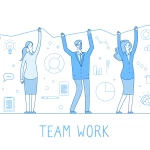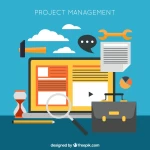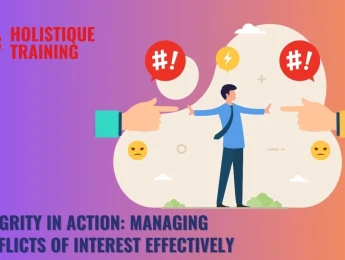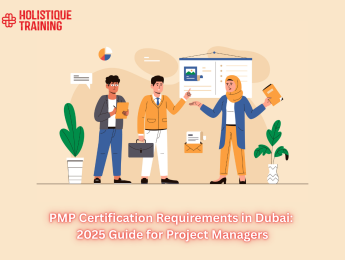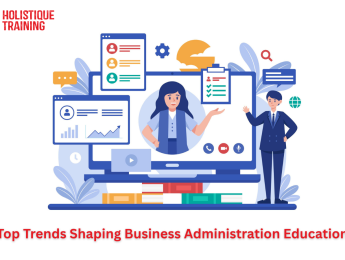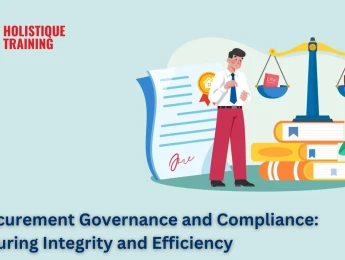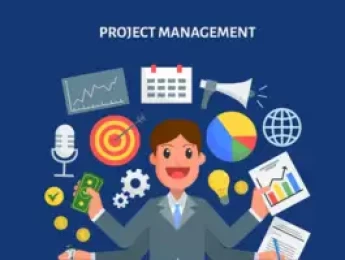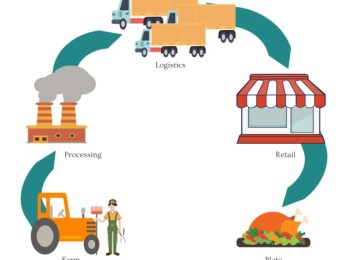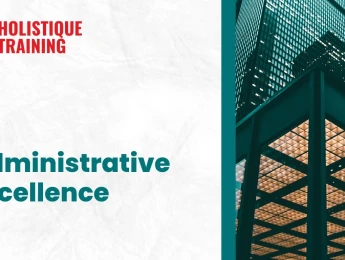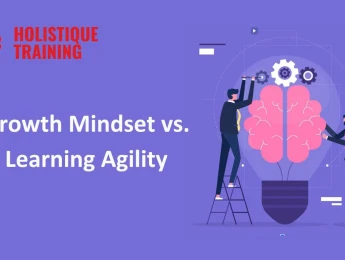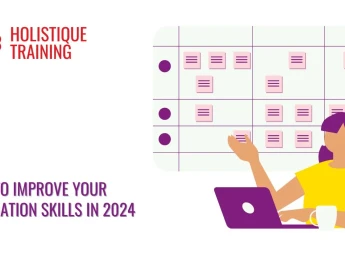- Table of Contents
- What Is Agile Project Management?
- Why Is Agile Project Management Important?
- Enhanced Adaptability
- Customer-Centric Approach
- Faster Time-to-Market
- Collaboration and Empowerment
- Continuous Improvement
- Improved Risk Management
- 8 Agile Facilitation Techniques
- a) Daily Stand-up Meetings
- b) Sprint Planning Meetings
- c) Retrospectives
- d) User Story Mapping
- e) Kanban Boards
- f) Pair Programming
- g) Timeboxing
- h) Impact Mapping
- Agile Collaboration Team Games
- a) The Marshmallow Challenge
- b) Product Box
- c) Sailboat Retrospective
- d) Agile Planning Poker
- The Future of Agile: Emerging Trends and Technologies
- 1. Integration of Artificial Intelligence (AI) and Machine Learning (ML)
- 2. DevOps and Agile Convergence
- 3. Blockchain for Enhanced Transparency
- 4. Remote Collaboration Tools
- 5. Scaled Agile Frameworks
- 6. Human-Centric Agile
- 7. Hybrid Agile Approaches
- Conclusion
Introduction
The world of project management is continually evolving, and in this fast-paced landscape, teams are constantly seeking innovative approaches to enhance collaboration and achieve exceptional results. Agile project management has emerged as a game-changer, enabling teams to adapt, collaborate, and innovate seamlessly. By emphasising flexibility, customer feedback, and iterative development, Agile empowers teams to navigate complex challenges with agility and drive continuous improvement. In this blog post, we'll delve into the essence of Agile project management and explore eight powerful Agile facilitation techniques that can transform your team's dynamics, leading to increased collaboration and a culture of innovation. Additionally, we'll introduce Agile collaboration team games that infuse excitement and camaraderie into the Agile process, fostering a stronger bond within the team.
What Is Agile Project Management?
Agile project management is a framework that originated from the Agile Manifesto in 2001, emphasising a customer-centric, iterative approach to software development. Since then, its principles have found application in various industries beyond software development. The fundamental pillars of Agile are flexibility, collaboration, customer feedback, and continuous improvement.
The Agile framework breaks projects into smaller, manageable iterations called "sprints." Each sprint typically lasts 1 to 4 weeks, during which cross-functional teams work together to deliver a potentially shippable product increment. Regular feedback and retrospectives ensure that the team continuously improves and adapts based on changing requirements and customer needs.
Why Is Agile Project Management Important?
Agile project management has rapidly gained popularity and is now considered a cornerstone of modern project execution. Its importance can be attributed to a myriad of advantages that significantly impact team performance, customer satisfaction, and overall project success. Let's delve deeper into why Agile project management is crucial for teams looking to thrive in today's fast-paced business landscape:
Enhanced Adaptability
In the relentless pace of today's business landscape, adaptability is non-negotiable. Traditional project management methodologies often falter in accommodating changes swiftly. On the contrary, Agile thrives on change, considering it an inherent and expected part of the development process. By breaking projects into iterative sprints, Agile empowers teams to respond promptly to evolving circumstances. This adaptability not only ensures that projects remain relevant in the face of changing requirements, market conditions, or customer expectations but also positions teams to seize new opportunities as they arise. The ability to pivot and adjust course in response to real-time feedback is a crucial aspect that sets Agile apart.
Customer-Centric Approach
Historically, in traditional project management approaches, customers had limited opportunities to provide feedback, often only at the project's completion. This lack of continuous involvement could lead to misaligned expectations and, ultimately, a product that did not fully meet customer needs. Agile, in stark contrast, places customers at the heart of the development process. Through continuous feedback loops integrated into the fabric of each sprint, customers are engaged at every stage. This ongoing dialogue enables teams to refine and adjust the product based on the invaluable insights of the end-users. By incorporating the customer's perspective throughout the development lifecycle, Agile ensures that the final product not only aligns with expectations but also delivers tangible value, fostering a stronger and more positive client relationship.
Faster Time-to-Market
In today's hyper-competitive business environment, the ability to deliver swiftly is a decisive factor for success. Agile's iterative approach facilitates the delivery of functional increments of the product in shorter cycles, a concept known as "incremental delivery." This enables businesses to release valuable features earlier, gaining a competitive edge and establishing an early presence in the market. Additionally, the rapid delivery characteristic of Agile allows teams to gather feedback sooner. This feedback loop, integrated into the iterative cycles, becomes a valuable tool for enhancing subsequent iterations. The result is not just speed to market, but a market presence that is agile and responsive to the evolving needs of customers.
Collaboration and Empowerment
Traditional hierarchical project management approaches often suffer from a lack of collaboration and transparency. Agile, on the other hand, fosters a culture of collaboration, transparency, and empowerment. Rather than relying on top-down decision-making, Agile empowers cross-functional teams to make decisions and take ownership of their work. This autonomy not only enhances team morale but also encourages innovation and creative problem-solving. Daily stand-up meetings and regular retrospectives serve as vital components of this collaborative culture, ensuring open communication channels. The emphasis on empowering teams to take charge of their work fosters a sense of ownership and accountability, driving the team towards a shared vision and goal.
Continuous Improvement
At the core of Agile project management is the principle of continuous improvement. Through regular retrospectives at the end of each sprint, teams engage in a structured reflection on their performance. This involves identifying what went well, what could be improved, and defining actionable steps for enhancement in the next sprint. This iterative refinement process ensures that teams evolve and mature over time. It becomes a mechanism for learning from experiences, adapting to challenges, and enhancing overall efficiency. The commitment to continuous improvement is not just a methodology but a mindset, instilling a culture of perpetual learning and growth within the team.
Improved Risk Management
Traditional project management often addresses risks late in the project lifecycle, leading to potentially costly consequences if issues arise. Agile, by design, addresses risks throughout the development process. The short iteration cycles enable teams to identify and mitigate risks early on, reducing the likelihood of potential roadblocks derailing the project. This proactive risk management approach contributes to a more resilient project delivery process, where potential obstacles are not just anticipated but actively managed to ensure smooth progression.
In essence, the importance of Agile project management is deeply rooted in its ability to adapt to change, prioritise customer satisfaction, expedite time-to-market, foster collaboration and empowerment, promote continuous improvement, and proactively manage risks. As organisations navigate the complexities of the modern business landscape, embracing Agile becomes not just a methodology but a strategic imperative for sustained success.
8 Agile Facilitation Techniques
To harness the power of Agile project management and foster effective collaboration within your team, let's now explore 8 Agile facilitation techniques that can drive your projects to success:
a) Daily Stand-up Meetings
The daily stand-up meeting, also known as the daily scrum, is a cornerstone of Agile communication. This short, focused gathering involves team members sharing updates on their progress, plans, and any obstacles they are encountering. The stand-up format encourages brevity and ensures that discussions remain relevant and actionable. By promoting transparency, team members gain insights into each other's work, fostering alignment and quick problem resolution. This technique serves as a daily pulse check, keeping everyone on the same page and reinforcing the collective commitment to project goals.
b) Sprint Planning Meetings
Before the start of each sprint, Agile teams engage in sprint planning meetings to define the sprint goal, outline tasks, and estimate the effort required. These sessions are crucial for establishing clear priorities and objectives. By involving the entire team in the planning process, a shared understanding of the sprint's goals emerges, fostering collaboration and commitment. Sprint planning meetings set the stage for a productive sprint by ensuring that everyone is aligned on the tasks at hand and the overall project trajectory.
c) Retrospectives
At the conclusion of each sprint, Agile teams conduct retrospectives to reflect on the sprint's outcomes. This retrospective is a structured session where team members discuss what went well, what could be improved, and identify actionable steps for the next sprint. Retrospectives serve as a continuous feedback loop, promoting a culture of learning and adaptation. By regularly assessing and adjusting their processes, teams ensure continuous improvement, preventing the recurrence of challenges and capitalising on successful strategies.
d) User Story Mapping
User story mapping is a visual technique that aids in understanding the user's journey and prioritising features accordingly. Teams create a visual representation of user stories, aligning them with the project's goals and user needs. This technique enhances collaboration by providing a holistic view of the project scope. It enables teams to prioritise features based on user value and dependencies, ensuring that development efforts are focused on delivering the most impactful features first.
e) Kanban Boards
Kanban boards provide a visual representation of work items and their status throughout the development process. Agile teams use Kanban boards to manage their workflow, identify bottlenecks, and optimise processes for increased efficiency. The visual nature of Kanban boards enhances transparency, allowing team members to see the flow of work and address any impediments promptly. This technique facilitates collaboration by providing a shared space for tracking progress and maintaining a clear overview of the project's status.
f) Pair Programming
In pair programming, two developers collaboratively work on the same piece of code. This technique promotes knowledge sharing, enhances code quality, and reduces the likelihood of errors. Through real-time collaboration, team members bring diverse perspectives to problem-solving, fostering innovation and creativity. Pair programming is not only an effective technique for improving code but also a means of strengthening team dynamics and building a shared understanding of the project's intricacies.
g) Timeboxing
Timeboxing involves allocating a fixed time duration for specific tasks or discussions. This technique encourages focused work, prevents over-analysis, and ensures that meetings remain productive. By setting predefined time limits for activities, teams cultivate a sense of urgency and discipline. Timeboxing is particularly beneficial during planning sessions, decision-making discussions, and collaborative activities, as it instals a rhythm that helps teams stay on track and maintain momentum.
h) Impact Mapping
Impact mapping is a collaborative technique that aligns project goals with actionable deliverables. Teams create visual maps connecting project objectives to specific outcomes, ensuring a clear understanding of how each task contributes to the overarching goals. This technique facilitates collaboration by providing a strategic perspective on project priorities. By aligning work with potential impact and value to the customer, impact mapping guides teams in making informed decisions and focusing efforts on activities that drive meaningful results.
These Agile facilitation techniques collectively contribute to the success of Agile teams by fostering collaboration, transparency, and adaptability. Each technique serves a specific purpose in the Agile framework, ensuring that teams remain agile, responsive, and capable of delivering high-quality results in a rapidly changing environment. Agile facilitation is not just a set of practices; it's a dynamic approach that empowers teams to navigate complexity with efficiency and innovation.
Table 1: Metrics to measure the effectiveness of agile techniques on collaboration
Metric | Description |
Team Velocity | Measure of work completed within a sprint. |
Cycle Time | Duration from task initiation to completion. |
Burndown Chart | Visual representation of work remaining over time. |
Customer Satisfaction | Feedback on delivered features and overall process. |
Daily Stand-up Engagement | Team members' active participation and collaboration in stand-ups. |
Agile Collaboration Team Games
In addition to the facilitation techniques mentioned above, Agile collaboration team games add a touch of excitement and engagement to the Agile process. These games not only foster teamwork and creativity but also promote innovative problem-solving:
a) The Marshmallow Challenge
The Marshmallow Challenge is a hands-on, team-building game that encourages experimentation, adaptability, and collaboration. In this game, teams are tasked with building the tallest possible freestanding structure using spaghetti, tape, string, and a marshmallow. The catch is that the marshmallow must be placed at the top of the structure. This game challenges teams to think creatively, communicate effectively, and adapt their strategies based on real-time feedback. It emphasises the importance of iterative development, as teams learn from each attempt, refine their approaches, and collaboratively innovate to achieve a common goal.
b) Product Box
The Product Box game is a creative exercise that enhances communication skills and helps teams understand the project's value proposition. In this game, teams create a physical or digital "product box" for their project, including key features, benefits, and target audience. This collaborative activity requires teams to distil complex project details into a visually appealing and informative format. By working together to design the product box, teams gain a deeper understanding of the project's goals and objectives. This game not only promotes collaboration but also ensures that team members are aligned in their understanding of the project's value and purpose.
c) Sailboat Retrospective
The Sailboat Retrospective is a fun and visual way to conduct retrospectives, providing a unique perspective on the team's journey. In this game, the team envisions their project as a sailboat navigating the seas. Team members identify "winds" representing positive aspects propelling the sailboat forward and "anchors" symbolising obstacles holding the sailboat back. This visualisation allows teams to collectively prioritise improvements by focusing on what is propelling them towards success and what is impeding their progress. The Sailboat Retrospective not only fosters collaboration but also encourages a shared understanding of the team's challenges and successes, promoting a positive and solution-oriented mindset.
d) Agile Planning Poker
Agile Planning Poker is a consensus-based estimation technique that adds an element of gamification to the planning process. In this game, team members use cards featuring numerical values to collectively assign relative effort estimates to tasks. Through discussion and negotiation, the team converges on a consensus estimate for each task. This game not only ensures that everyone's input is considered but also promotes collective decision-making. By incorporating elements of uncertainty and variability, Agile Planning Poker reinforces the Agile principle of adapting to change. It encourages teams to collaboratively explore and understand the complexity of tasks, fostering a sense of shared responsibility for project success.
These Agile collaboration team games go beyond traditional team-building activities; they are carefully designed to align with Agile principles and enhance the overall effectiveness of Agile teams. The games promote creativity, communication, and adaptability—qualities that are integral to the Agile mindset. By incorporating these games into the Agile process, teams not only break down barriers but also create an environment that nurtures collaboration, innovation, and a collective sense of achievement. Agile collaboration team games, therefore, stand as more than just recreational activities—they are strategic tools for building high-performing and cohesive Agile teams.
The Future of Agile: Emerging Trends and Technologies
As the landscape of project management continues to evolve, the future of Agile is being shaped by emerging trends and technologies. Agile methodologies, born out of a need for flexibility and adaptability, are not immune to the forces of innovation. In this section, we will explore the exciting developments that are influencing the future of Agile, introducing new possibilities and enhancing the way teams collaborate and deliver value.
1. Integration of Artificial Intelligence (AI) and Machine Learning (ML)
One of the most compelling trends shaping the future of Agile is the integration of artificial intelligence (AI) and machine learning (ML) into Agile practices. AI and ML technologies have the potential to revolutionise how teams manage projects, make decisions, and analyse vast amounts of data. Agile teams can leverage these technologies to gain insights into project performance, identify patterns, and make data-driven decisions. For example, AI-powered analytics can provide predictive insights into potential risks, enabling teams to proactively address challenges before they escalate. The integration of AI and ML aligns with the Agile principle of responding to change and continuously improving processes based on real-time information.
2. DevOps and Agile Convergence
The convergence of DevOps and Agile methodologies is a trend that reflects a holistic approach to the software development lifecycle. While Agile focuses on iterative development and flexibility, DevOps emphasises collaboration between development and operations teams to streamline the entire delivery pipeline. The integration of these methodologies creates a more seamless and efficient workflow, where development, testing, and deployment are interconnected. This convergence enables teams to achieve a faster time-to-market, reduce bottlenecks, and enhance overall project delivery. As organisations increasingly recognise the benefits of aligning Agile and DevOps practices, this trend is expected to gain momentum, becoming a standard approach for high-performance teams.
3. Blockchain for Enhanced Transparency
Blockchain technology, known for its decentralised and transparent nature, is emerging as a tool to enhance transparency and traceability in Agile projects. In Agile, transparency is a fundamental principle, and blockchain provides an immutable and distributed ledger that ensures the integrity of project data. This technology can be applied to project tracking, version control, and even in managing the flow of work on Kanban boards. By leveraging blockchain, Agile teams can create a tamper-proof record of project activities, fostering trust among team members and stakeholders. The use of blockchain aligns with the Agile emphasis on communication, collaboration, and maintaining a shared understanding of project progress.
4. Remote Collaboration Tools
The rise of remote work has been accelerated by global events, and Agile methodologies are adapting to this shift by incorporating advanced remote collaboration tools. Virtual whiteboards, video conferencing platforms, and collaborative document editing tools enable distributed Agile teams to maintain effective communication and collaboration. Agile ceremonies, such as sprint planning meetings and retrospectives, can seamlessly transition into virtual environments. With the aid of advanced collaboration tools, teams can overcome geographical barriers and continue to embrace Agile principles, ensuring that iterative development and regular communication remain at the core of their practices.
5. Scaled Agile Frameworks
As Agile methodologies continue to mature, scaled Agile frameworks are gaining prominence to address the complexities of larger organisations and enterprise-level projects. Frameworks such as SAFe (Scaled Agile Framework), LeSS (Large Scale Scrum), and Nexus provide structures for coordinating multiple Agile teams working towards a common goal. These frameworks offer guidance on how to scale Agile principles, ensuring alignment, collaboration, and continuous delivery across large and complex projects. The adoption of scaled Agile frameworks reflects a growing recognition that Agile's benefits can extend beyond individual teams to impact entire organisations.
6. Human-Centric Agile
A notable shift in the future of Agile is the emphasis on a human-centric approach. Agile methodologies have always prioritised individuals and interactions over processes and tools, but the future of Agile is poised to deepen this focus. The understanding that empowered and motivated individuals are the key to successful projects is driving a reevaluation of team dynamics, leadership styles, and organisational culture within Agile frameworks. This human-centric approach aligns with the Agile Manifesto's principles and acknowledges that the success of Agile projects ultimately hinges on the collaboration and well-being of the people involved.
7. Hybrid Agile Approaches
While Agile methodologies have proven their effectiveness, organisations are increasingly adopting hybrid approaches that combine Agile with elements of other project management methodologies. Hybrid models allow organisations to tailor their approach based on the specific needs and characteristics of a project. For instance, a project may incorporate Agile practices for iterative development while employing traditional project management techniques for long-term planning and budgeting. The flexibility of hybrid approaches enables organisations to strike a balance between Agile's adaptive nature and the structure required for certain projects or industries.
In short, the future of Agile is dynamic and full of exciting possibilities. The integration of AI and ML, the convergence of DevOps and Agile, the use of blockchain for transparency, the advent of advanced remote collaboration tools, the rise of scaled Agile frameworks, the shift towards a human-centric approach, and the adoption of hybrid Agile approaches are all contributing to the evolution of Agile methodologies. As organisations navigate the complexities of a rapidly changing world, Agile remains a resilient and adaptive approach, continually incorporating emerging trends and technologies to enhance collaboration, deliver value, and drive project success.
Conclusion
In today's fast-paced business environment, Agile project management has emerged as a powerful methodology to foster collaboration and innovation within teams. By promoting transparency, continuous feedback, and adaptability, Agile empowers teams to deliver high-quality products that meet customer expectations effectively. Employing the eight Agile facilitation techniques and incorporating Agile collaboration team games into your workflow can further enhance teamwork, creativity, and problem-solving skills. Embrace Agile project management to unlock the full potential of your team and drive success in an ever-evolving world.



